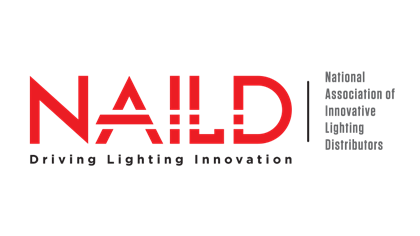Lighting professionals can now focus their expertise on specific market segments through its redesigned Lighting Specialist (LS II) program, the National Association of Innovative Lighting Distributors (NAILD) announced today.
(NAILD/ LEDinside)
Choices of market specialties include retail, industrial, office and educational facilities.
“Our newly revamped and innovative LS II program gives you a methodical, step-by-step process to help get to the same level of knowledge as someone who has been in the industry for several years”, NAILD President Robin Watt said. “You want someone who can look at the space and understand what the current needs are. You might work in an office that was designed and built in 1970 and used as a call center. Now the space has a different purpose and different lighting requirements. You don’t want someone to just sell you updated lamps.”
The systematic, self-paced, online LS II program includes five modules that all registrants must complete, followed by a choice of market specialty. A participant may choose to complete all four market segments and receive an LS II certificate or complete a single market specialty to earn either an LS R, LS IL, LS O or LS E certification.
The course includes workbook exercises, practical activities, field trips, quizzes and a final exam. Participants are encouraged to work closely with a coach. The market-specific portion includes creating a proposal for a client, with topics such as evaluation, schematic design and development, financial analysis and contract and bidding.
“The LS II program is about how to talk with customers, uncover what they need, what they value and then look at what motivates them to take action,” said program creator Paul Hafner, LC, who has worked in lighting and energy conservation for the past three decades.
“People in our industry are mostly in the product business,” Hafner said. “They’re focused on reducing the electrical spend. That’s not what we’re trying to teach people with LS II. We’re trying to help people understand what lighting does and how it can help businesses reach institutional goals and boost profits.”
While lighting can represent 25 to 39 percent of a business’ total electrical costs, that is only a fraction of 1 percent of a business’ total operating budget, Hafner said. In contrast, salaries and benefits can comprise 85 percent of a business’ operating costs.
“The real cost of operating the business is not lighting, but what lighting does to influence the people in the space,” Hafner said. “Yes, you need to understand lighting maintenance and energy savings, but you also need to understand how light and lighting affect human performance. You need to know the relationship between daylight and light from fixtures, between the computer screen and light around the screen. Human beings are affected by the quality of the light and the quantity— too much and too little.
“You need to ask, ‘How well does the quality and quantity of light support the person’s ability to perform the required visual task?’ You need to think holistically about performance, productivity and safety. These are really things that impact business’ bottom line. It represents a lot more than a fraction of 1 percent of the operating cost. Payback and ROI are not always the right way to think about lighting.”
Hafner developed the program several years ago and has been field-testing it to make necessary adjustments. It currently includes updates from the 10th Edition of the IES Lighting Reference Handbook and ASHRAE 90.1-2010.












